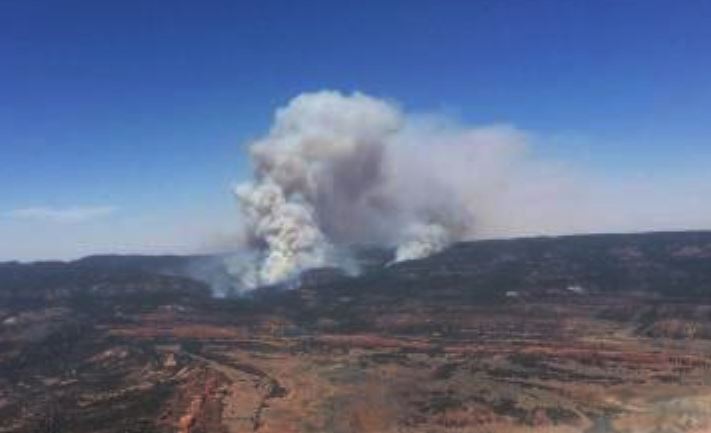Dry heat is fueling several out of control wildfires in Alberta and British Columbia this week, where fire officials say this is the worst fire season the region has seen since 2003.
There are 156 fires burning in Canada’s Northwest Territories, The Toronto Sun reports.
As of Monday morning, around 11 fires were burning out of control in Alberta, according to the province’s wildfire situation report. Meanwhile, the explosive Spreading Creek fire near Banff National Park, British Columbia, is being held for the first time since lightning ignited it on July 3, The Calgary Herald reported. The fire had burned more than 6,800 hectares (around 16,800 acres) as of July 14.
The fire has intermittently shut down parts of the Icefields Parkway that winds from Banff to Jasper. Photos capturing its spectacular plume of smoke have sparked an international interest in the fire.
While fires spread on both sides of the national park, conditions are no different in BC’s interior, where a fire ignited on Tuesday in tinder-dry country near West Kelowna. The so-called Mount Boucherie fire had burned around 12 acres by Tuesday evening, and was being held by fire retardant lines, local media reported. The fire continued to burn into Tuesday night.
West Kelowna is in a fire-prone corridor known for regular wildfires. In 2003 in nearby Kelowna, lightning ignited the Okanagan Mountain Park fire, which went on to burn hundreds of homes and prompted the largest fire-evacuation in Canadian history.
I’ve spent some time in Kelowna and last year wrote a story about the Okanagan Mountain fire, ten years after the historic blaze. It had some eerie parallels to another wildfire, the Waldo Canyon fire, which I covered while working at The Gazette in Colorado Springs. Read my story on the Okanagan Mountain fire here.



